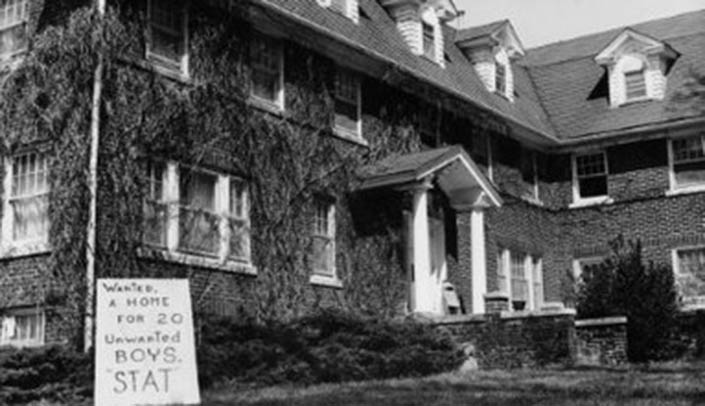Since UNMC’s inception in 1902, fraternities have come and gone. Through the years, many changes to the fraternities have taken place, including the location of the chapter houses and becoming co-ed. Through all of the changes, one thing has remained the same for fraternities — relationships. Fraternities have always provided students with camaraderie and a network of support.
Today, UNMC has several fraternities: Phi Rho Sigma and Phi Chi are medical fraternities and Kappa Epsilon and Kappa Psi are pharmacy fraternities.
Parties, dances, and youthful shenanigans have been part of the fraternity socialization. Phi Rho Sigma alumni from the 1940s recall intense games of pitch during lunch breaks, which would cause poor attendance in the noon gross anatomy class.
Dr. Millard Gunderson, professor of pathology and bacteriology, lived behind the Phi Rho Sigma house. Frat members would throw snowballs at Dr. Gunderson as he walked to work. Alumni remember contentious battles between the Gundersons and the fraternity in which the police were sometimes called.
Medical fraternities also enjoyed a good party and dance, and none could have been better than when Nat King Cole and his trio played at the Phi Rho Sigma house. The wives of fraternity members also hosted events to foster their relationships with other wives.
Fraternity chapter houses also provided members an inexpensive home while attending school. Robert Wigton, M.D., assistant dean of special projects for the UNMC College of Medicine, remembers that in the 1960s rent at the Phi Rho Sigma house was $30. Lunch and dinner would only cost about $1.80 a day. The accommodations, such as the room at the Phi Rho Sigma house called “Little Siberia,” would sometimes be lacking in various comforts. The Phi Rho Sigma house was torn down in 1975. Other chapter houses, such as the Phi Chi house located at 3708 Dewey St. in the historic Metz mansion, still provide an inexpensive and supportive environment to fraternity members.
Fraternities have always been a means of multi-generational mentoring for UNMC medical students. Fourth-year members would mentor first-year members, who in turn would provide the same support as they advanced through medical school. Fraternity member alumni continue to financially support and mentor current members.
UNMC fraternities have traditionally promoted high academic achievement, opportunities for active participation at the national level, and the means to give back to the community. Current fraternities at UNMC embrace similar missions and priorities.
If you have stories about your time as a member of a fraternity at UNMC or would like to share information, photos, documents, or publications about UNMC fraternities, please contact the special collections department at the McGoogan Library at history@unmc.edu.

Good to hear the positive side of these organizations! Thank you! I have a grandson that is starting there in the fall.